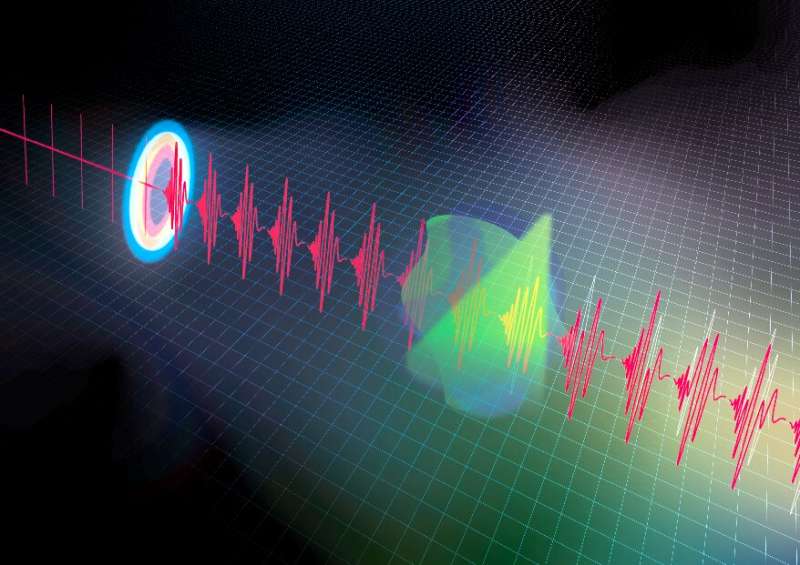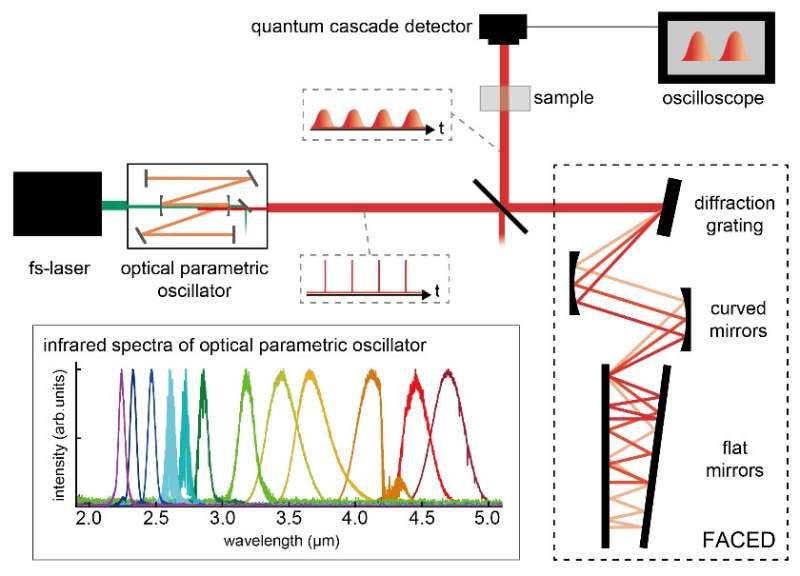Giant leap for molecular measurements

Spectroscopy is an important tool of observation in many areas of science and industry. Infrared spectroscopy is especially important in the world of chemistry, where it is used to analyze and identify molecules. The current state-of-the-art method can make approximately 1 million observations per second. UTokyo researchers have greatly surpassed this figure with a new method about 100 times faster.
From climate science to safety systems, manufacture to quality control of foodstuffs, infrared spectroscopy is used in so many academic and industrial fields that it's a ubiquitous, albeit invisible, part of everyday life. In essence, infrared spectroscopy is a way to identify what molecules are present in a sample of a substance with a high degree of accuracy. The basic idea has been around for decades and has undergone improvements along the way.
In general, infrared spectroscopy works by measuring infrared light transmitted or reflected from molecules in a sample. The samples' inherent vibrations alter the characteristics of the light in very specific ways, essentially providing a chemical fingerprint, or spectra, which is read by a detector and analyzer circuit or computer. Fifty years ago the best tools could measure one spectra per second, and for many applications this was more than adequate.
More recently, a technique called dual-comb spectroscopy achieved a measurement rate of 1 million spectra per second. However, in many instances, more rapid observations are required in order to produce fine-grain data. For example some researchers wish to explore the stages of certain chemical reactions that happen on very short time scales. This drive prompted Associate Professor Takuro Ideguchi from the Institute for Photon Science and Technology, at the University of Tokyo, and his team to look into and create the fastest infrared spectroscopy system to date.

"We developed the world's fastest infrared spectrometer, which runs at 80 million spectra per second," said Ideguchi. "This method, time-stretch infrared spectroscopy, is about 100 times faster than dual-comb spectroscopy, which had reached an upper speed limit due to issues of sensitivity." Given there are around 30 million seconds in a year, this new method can achieve in one second what 50 years ago would have taken over two years.
Time-stretch infrared spectroscopy works by stretching a very short pulse of laser light transmitted from a sample. As the transmitted pulse is stretched, it becomes easier for a detector and accompanying electronic circuitry to accurately analyze. A key high-speed component that makes it possible is something called a quantum cascade detector, developed by one of the paper's authors, Tatsuo Dougakiuchi from Hamamatsu Photonics.
"Natural science is based on experimental observations. Therefore, new measurement techniques can open up new scientific fields," said Ideguchi. "Researchers in many fields can build on what we've done here and use our work to enhance their own understanding and powers of observation."
More information: Akira Kawai, Kazuki Hashimoto, Tatsuo Dougakiuchi, Venkata Ramaiah Badarla, Takayuki Imamura, Tadataka Edamura and Takuro Ideguchi. Time-stretch infrared spectroscopy. Communications Physics. DOI: 10.1038/s42005-020-00420-3
Journal information: Communications Physics
Provided by University of Tokyo




















